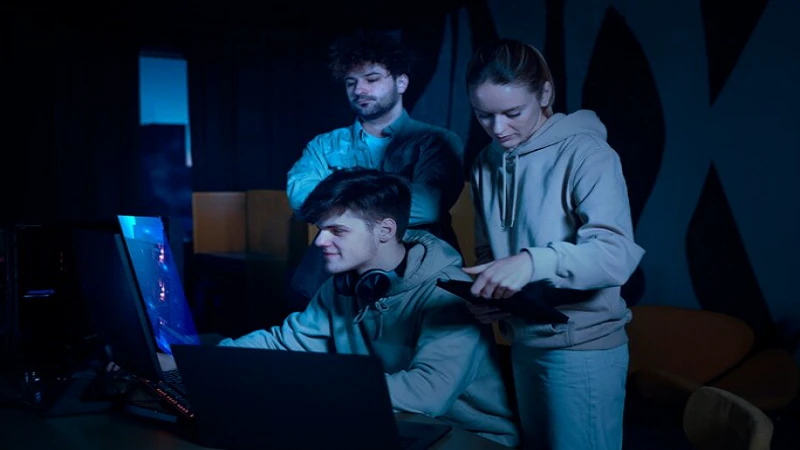In the world of gaming, Linux has slowly carved a niche as a reliable platform for gamers, especially with the rise of PBLinuxGaming. This platform allows Linux users to experience the world of gaming seamlessly, with an expanding library of games and robust performance. While Linux might not have initially been known for gaming, advancements in tools and compatibility layers like Proton and Wine have made it an attractive option for many gamers.
If you’re using PBLinuxGaming and want to improve your gaming experience, there are several tech hacks you can implement. This guide will walk you through simple, practical steps to enhance your performance, improve stability, and make your gaming experience more enjoyable.
Optimizing Your Linux System for Gaming
Before you dive into advanced settings or tweaks, make sure your Linux system is optimized for gaming. A well-configured system is key to getting the best performance out of your games.
Keep Your System Up-to-Date
The first step to a smooth gaming experience is ensuring your operating system and drivers are up-to-date. Regular updates bring performance improvements, new features, and bug fixes that help optimize your system.
- Graphics Drivers: Always ensure your graphics card drivers are the latest version. If you’re using an NVIDIA card, it’s essential to use the proprietary drivers, as they provide better performance than the open-source alternatives. AMD users typically benefit from the latest open-source drivers, but keeping everything updated will ensure smoother gameplay.
- Kernel and System Updates: Linux kernels are constantly evolving, and newer versions tend to offer better performance for gaming. Consider upgrading your kernel if you’re running an older version. Similarly, updating your system packages ensures that you have the latest security patches and system improvements.
Choose the Right Desktop Environment
While Linux offers many desktop environments (DEs), some are more lightweight and efficient for gaming than others. For the best gaming performance, consider switching to a more minimalistic DE.
- XFCE and LXQt are great options if you’re looking for an environment that uses fewer resources. These DEs keep your system light, leaving more of your machine’s power available for gaming.
Switching to a more efficient desktop environment helps your system run faster and more efficiently, which can translate to better game performance.
Close Background Applications
Closing unnecessary background applications can free up system resources, which can be particularly helpful when gaming. Applications like web browsers, music players, and other utilities consume a lot of memory and processing power. Before starting a game, make it a habit to close anything that isn’t essential for gaming.
Using Proton and Wine for Windows Games
While Linux has a growing library of native games, many titles are still designed for Windows. Fortunately, tools like Proton and Wine allow you to run many of these Windows-only games on Linux with minimal hassle.
Proton for Steam Games
If you’re using Steam for your games, you’re in luck. Proton, a tool developed by Valve, allows you to play Windows games on Linux through the Steam client. Proton works by providing compatibility for many Windows games, letting you play them just like you would on a Windows machine.
- How it works: Proton automatically integrates with Steam to run Windows games. In most cases, you don’t need to do anything special to start playing. Simply install the game through Steam, and Proton will handle the rest.
- Tuning Proton: Some games may require specific tweaks to run smoothly. Fortunately, you can select different versions of Proton from Steam’s settings. Experiment with different versions to find the one that works best for each game.
Wine for Non-Steam Games
For non-Steam games or older titles, you can use Wine. Wine is a compatibility layer that allows you to run Windows applications on Linux. It works by translating Windows system calls into something your Linux system can understand.
- How it works: Install Wine on your system, and you’ll be able to run many Windows games directly from your desktop. It doesn’t require the Steam client and works for a wide range of titles.
While Proton is generally easier for newer games, Wine offers a more manual but still effective method for running a broader range of older games and applications.
Enhance Your GPU Performance
If you want to take your gaming experience on PBLinuxGaming to the next level, consider tweaking your GPU settings. Overclocking your GPU can unlock additional performance and make your games run smoother.
Use Overclocking Tools
Overclocking your GPU allows you to increase the performance of your graphics card, which can result in higher frame rates and smoother gameplay. There are various tools available that let you overclock your GPU from within the Linux environment. Just remember that overclocking should be done cautiously, as it can lead to overheating if not monitored properly.
Ensure that you have proper cooling solutions in place before attempting to push your hardware to its limits. Always test stability after making changes to ensure you don’t encounter crashes or other issues.
Monitor Your GPU and System Temperatures
It’s essential to keep an eye on your system’s temperature, especially when pushing your GPU harder with overclocking. Make sure your system doesn’t overheat, as this can cause crashes or permanent damage. You can use various monitoring tools to keep track of your system’s health.
Vulkan: The Key to Better Performance
For Linux gamers, Vulkan is a game-changer. Vulkan is a low-level graphics API designed to provide high performance while minimizing overhead. Many modern games support Vulkan, and it’s an excellent way to boost game performance compared to older APIs like OpenGL.
Opt for Vulkan-Supported Games
Whenever possible, play games that support Vulkan. These games typically run faster and smoother on Linux, offering a better overall experience. Check the game’s settings or documentation to see if Vulkan is available.
Enable Vulkan in Your Settings
Some games might not automatically detect Vulkan on Linux, so it’s worth checking the game settings to ensure Vulkan is selected. If you’re unsure, you can usually find the option in the graphics settings of the game.
By enabling Vulkan, you can unlock significant performance improvements, especially in graphically demanding titles.
Reducing Input Lag and Latency
Input lag is common in fast-paced games, especially for competitive gaming. Fortunately, there are steps you can take to minimize input lag and reduce latency.
Use a Wired Connection
If you play online multiplayer games, always opt for a wired Ethernet connection rather than Wi-Fi. A wired connection provides more stable, faster speeds, resulting in lower latency and less lag. This is especially important for fast-paced online games where every millisecond counts.
Reduce Display Lag
Display lag can also hinder your gaming experience. To minimize it, use a monitor with a low response time and enable any low-latency settings available in the game or graphics driver.
Optimize Input Devices
Ensure your input devices (like your mouse and keyboard) have high polling rates for better responsiveness. This ensures that your commands are registered faster, crucial for precise movements in competitive gaming.
Fine-Tuning Game Settings
Every game is different, but most modern titles provide a wide range of graphical settings that you can adjust to find the perfect balance between performance and visuals.
Adjust Texture Quality and Anti-Aliasing
Reducing the texture quality and disabling anti-aliasing can significantly improve performance, especially on older hardware. Anti-aliasing can be a big resource hog, and turning it off will free up system resources for smoother gameplay.
Optimize Resolution and Frame Rate
Adjusting the resolution and limiting the frame rate can help balance performance and visual quality. Lowering the resolution can provide a noticeable increase in frame rates while capping the frame rate can prevent screen tearing and ensure a more stable experience.
Conclusion
Linux gaming has come a long way, and with PBLinuxGaming, it’s easier than ever to enjoy a wide variety of games on this open-source platform. By implementing these practical tech hacks, you can optimize your system, enhance performance, and reduce input lag for a smoother and more enjoyable gaming experience.
Whether you’re tweaking your system settings, using Proton for Windows games, or pushing your GPU to the limit, the right combination of hacks and optimizations will help you get the most out of PBLinuxGaming. Keep experimenting with different settings, and enjoy your Linux gaming setup to its fullest!
Expand your knowledge with Fashion Noah!


